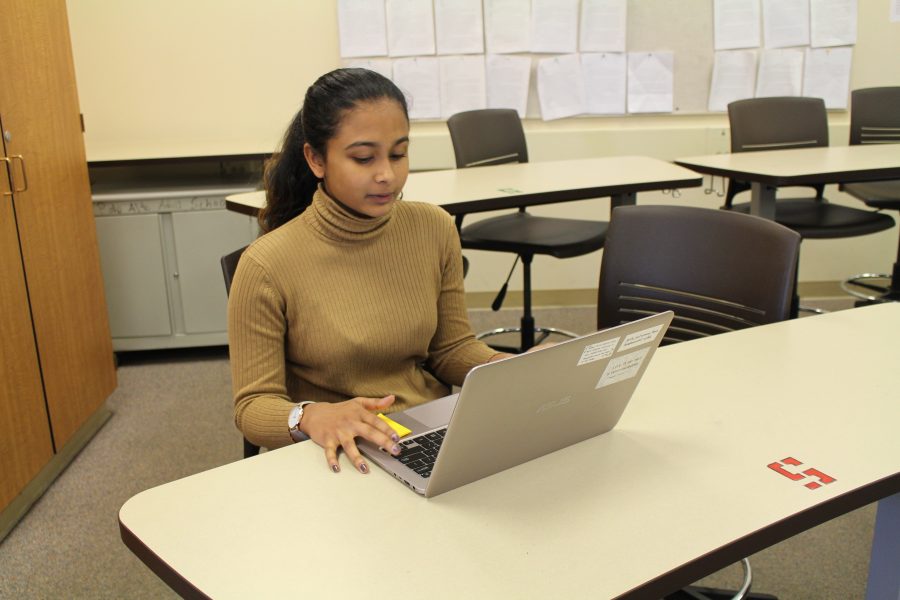In this final project, called The Capstone Project, students are find a real-world social justice issue that interests them, determine a solution and make an effort to aid the problem. Students are to then write an eight to 10 page research paper on the social issue they studied and what they did to combat the problem. Social justice issues can range from women’s equality to racial barriers to the childhood education gap.
The Social Justice Pathway matches a student with an adult mentor in the community based upon a specific area of interest.
Senior Yotam Ponte, who is in the SJP, wants to focus on food justice.
“I want to focus on why people aren’t getting healthy food and why [and how to x this],” Ponte said.
English teacher Erin Angell and history teacher Eric Bloom, who together lead the First Cohort, have done various exercises in class to help students nd a topic that will interest them.
One such exercise that helped students narrow down their options for a topic asked students to write down anything that was considered an issue in the community. Each student was to write down any skills that they have, as well as activities that they love to do on sticky notes. From there, they started to research speci c social justice issues that relat- ed to their skills and interests. After writing down ideas for possible top- ics, students started nding credible articles that related to their areas of interest.
Topics included poverty, access to medical care, women’s rights, lan- guage barriers and lack of natural resources.
From there, students had to choose their top three issues that interested them the most and come up with ways they could attempt to help remedy this problem.
ere are many di erent ways stu- dents can nd a solution for the issue that they have chosen. For example, if a student wanted to focus on the education gap for children in the Bay Area, they could start a program that would help children who need more one-on-one attention in reading and writing.
Another resource that Social Jus- tice students have at their disposal is Advanced Authentic Research (AAR). AAR is a new class that Paly began o ering last year. is class matches a student with an adult men- tor in the community based upon a speci c area of interest.
en, the student and the men- tor will meet at least once a week to
discuss the project and ways to move forward.
Each mentor is a valuable resource because they can help the student ob- tain connections to help them solve their social justice issue.
e student then researches an issue that sparks their interest with guidance and resources from the mentor, and eventually, the student completes a formal research paper on the issue.
Topics included poverty, access to medical care, women’s rights, language barriers and lack of natural resources.
is year, Social Justice students are required to take AAR as their mentor and research will help them with their Capstone Project and will ultimately help students gain all the
information they need to successfully complete their project.
Students say that they are excit- ed about the prospect of creating a change within their community be- cause of this project. Many of them have a general idea of what topic they want to focus on, even though they are still in the rst stages of the proj- ect.
Ahana Ganguly, a senior in the SJP, wants to observe how the mind- set of social justice students changes throughout their four years in high school.
“I’m thinking about writing a sur- vey to track mindset change in stu- dents as they move through the So- cial Justice Pathway — it’ll measure resilience, critical thinking and social tolerance,” Ganguly said.
Senior Jeanette Andrews, another member of the Pathway, has not fully decided what she wants to focus on
yet, but is leaning towards a project related to women’s rights and femi- nist issues.
“I might want to do something related to gender inequality and how girls are taught to put a huge value on appearance,” Andrews said.
Another SJP member, senior Molly Weitzman, wants to study how language barriers a ects children’s education.
“Education, speci cally helping kids who don’t have English speaking parents at home to help with writing, [is what I want to focus my Capstone project on],” Weitzman said.
After two years of being in the SJP, the students are nally utilizing all of the skills and resources they have gained from their various expe- riences to put together a nal proj- ect that will focus on and improve a social justice issue that they are truly passionate about.

